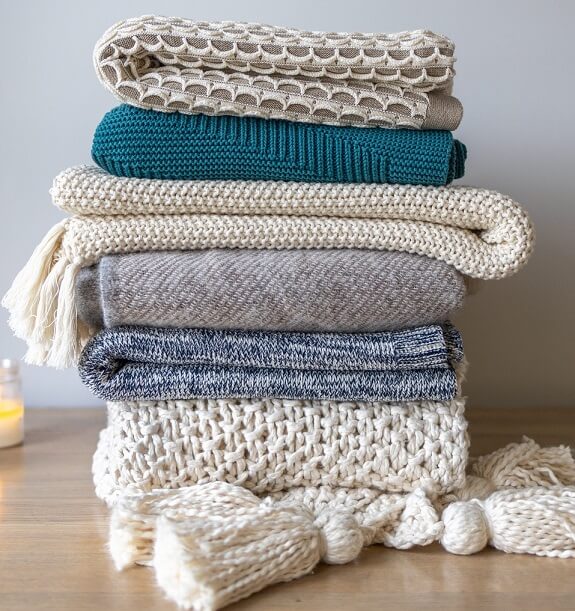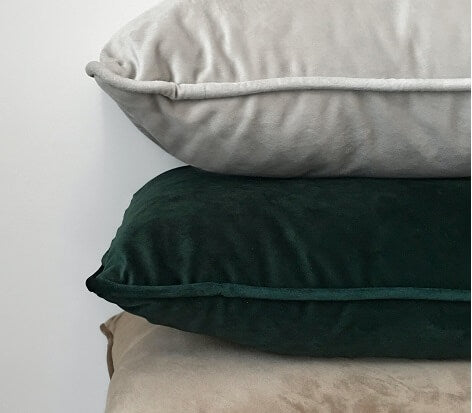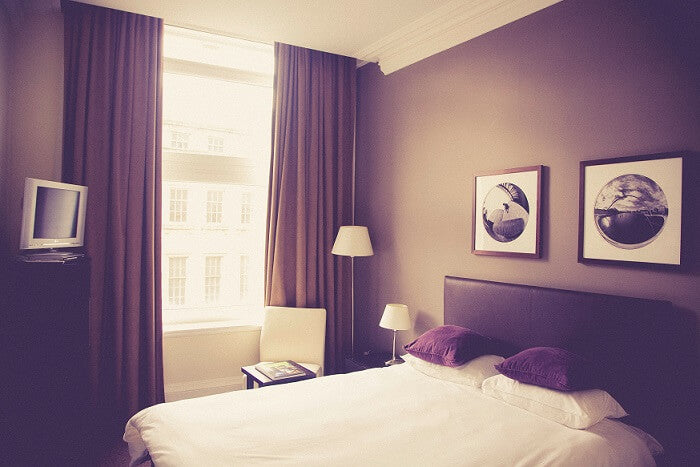If you suffer from allergies or asthma, you know how important it is to create a healthy sleeping environment. The right mattress protector can make all the difference in providing relief from allergens and ensuring a restful night's sleep. In this article, we will explore the best mattress protectors specifically designed for allergy and asthma sufferers.

Understanding the Connection Between Sleep, Allergies, and Asthma
Allergies and asthma often disrupt a good night's sleep, with common bedroom allergens like dust mites, pet dander, and pollen playing a significant role. When these irritants infiltrate the bedroom, they can directly affect respiratory health, leading to asthma flare-ups and allergic reactions that interrupt sleep. The cyclic effect of poor sleep then exacerbates the severity of these conditions, creating a challenging environment for sufferers to find relief. The bedroom, a place meant for rest and recovery, can unwittingly become a trigger zone without proper precautions.
Understanding this connection highlights the importance of a clean sleeping environment. Mattresses, often overlooked, are a hotspot for allergens. Without adequate protection, they can accumulate over time, increasing exposure during the night when the body is supposed to be healing. It's crucial to recognize that managing allergens in the sleep environment can have a profound impact on alleviating the symptoms of allergies and asthma. This is not just about comfort but about protecting health and enhancing the quality of life by tackling one of the most significant, yet modifiable, factors affecting these conditions. Engaging in strategies to minimize exposure to these allergens in the bedroom can thus play a pivotal role in breaking the cycle of sleep disturbances and respiratory issues, paving the way for a more restful and symptom-free night.
The Role of Mattress Protectors in Allergy and Asthma Management
Mattress protectors serve as a crucial defensive layer in the battle against bedroom allergens, effectively safeguarding sleepers from the microscopic intruders lurking within their mattresses. These indispensable accessories are engineered to create an impervious barrier, thwarting the ingress of dust mites, pet dander, and a plethora of other allergenic particles. For individuals grappling with allergies and asthma, a mattress protector is not merely an addition to their bedding ensemble but a vital component in their arsenal for managing symptoms and fostering an environment conducive to uninterrupted sleep.
The functionality of mattress protectors extends beyond their allergen-blocking capabilities. By encapsulating the mattress, these protectors prevent bodily fluids, skin flakes, and external contaminants – all of which serve as food sources for dust mites and mold – from penetrating the mattress's surface. This not only aids in maintaining a cleaner sleep surface but also prolongs the lifespan of the mattress itself by safeguarding against the accumulation of allergens and moisture, which can degrade the mattress's materials over time.
Equipping your bed with a mattress protector tailored for allergy and asthma relief is a proactive measure that can significantly mitigate the presence of allergens in the bedroom. This intervention, coupled with regular cleaning practices, can transform your sleep space into a sanctuary, minimizing the risk of allergy and asthma exacerbations that can disturb restful sleep. By establishing this protective barrier, individuals are empowered to take control of their sleep environment, laying the groundwork for nights of deeper, more restorative sleep, free from the interruptions of allergy and asthma symptoms.
Memory Foam Mattresses
The memory foam can help decrease your symptoms of allergies, and enhance your comfort at the same time. You will find memory foam in both hybrids (these incorporate memory foam layers on top of innerspring), and foam-core mattresses.
What to Look for in a Hypoallergenic Mattress Protector
Selecting the right hypoallergenic mattress protector involves focusing on several key features to ensure the highest level of protection against allergens and irritants. Firstly, the material of the mattress protector is crucial; opt for materials known for their natural resistance to dust mites, pet dander, and other common allergens. Fabrics such as bamboo, organic cotton, or microfiber offer a soft, breathable surface that doesn't compromise on allergen defense.
Another vital attribute is the protector's construction. Look for tightly woven fabrics that prevent allergens from penetrating the barrier to your mattress. A pore size of less than 10 microns is recommended to effectively block dust mites and their waste, which are major triggers for asthma and allergy sufferers.
Waterproofing is also a key factor in selecting a mattress protector. A waterproof layer will ensure that spills, sweat, and other moisture do not seep into your mattress, discouraging the growth of mold and mildew—common allergens that can exacerbate respiratory conditions. However, it's essential that this protective layer does not sacrifice breathability. A breathable protector facilitates air circulation, helping to regulate body temperature and reduce humidity levels in the bed, further inhibiting the growth of allergens.
Lastly, ensure that the protector fits your mattress snugly. A secure fit not only prevents the protector from shifting during the night but also minimizes the chances of exposure to allergens. Look for protectors with deep pockets and elasticized edges to accommodate a variety of mattress heights and provide a seamless, secure fit.
By prioritizing these features, you can confidently choose a hypoallergenic mattress protector that offers robust protection against allergens, contributing to a cleaner, more allergen-free sleeping environment.
What type of bedding is best for allergies?Special fabrics like silk, organic cotton, and microfiber are your best bet against dust mites, while still remaining breathable enough to keep you cool while you sleep. Making sure you pillow and mattress protectors also seal shut with a zipper is another way to help.
Top-Rated Mattress Protectors for Allergy and Asthma Sufferers
Discovering the ideal mattress protector to mitigate allergy and asthma symptoms is paramount for achieving undisturbed sleep. The market is brimming with options, but a few stand out due to their superior protection and comfort. Among the most esteemed are:
- **SafeRest Premium Hypoallergenic Waterproof Mattress Protector** - Renowned for its ability to preserve the mattress against dust mites, fluids, and allergens without compromising comfort. Its breathable membrane allows for air circulation while blocking unwanted particles.
- **Linenspa Zippered Encasement Waterproof, Dust Mite Proof, Bed Bug Proof Breathable Mattress Protector** - Offers comprehensive protection by encasing the entire mattress. Its zippered design ensures no entry points for allergens, making it an excellent choice for those particularly sensitive to dust mites and bed bugs.
- **SureGuard Mattress Encasement** - Delivers 100% waterproof protection and is bed bug proof, in addition to being hypoallergenic. Its design is focused on safeguarding against a wide array of allergens, offering peace of mind for asthma and allergy sufferers.
- **PlushDeluxe Premium Bamboo Mattress Protector** - Utilizes the natural hypoallergenic properties of bamboo, which is also renowned for its breathability and moisture-wicking capabilities. This protector ensures a cool, allergy-friendly sleep environment.
- **AllerEase Maximum Allergy and Bed Bug Waterproof Zippered Mattress Protector** - Specifically targets those most vulnerable to severe allergies and asthma, offering a barrier against dust mites, pet dander, and bed bugs.
Each of these protectors brings a unique set of features to the table, all designed with the ultimate goal of enhancing sleep quality by reducing exposure to allergens and irritants.

How to Properly Use and Care for Your Mattress Protector
Maximizing the effectiveness of your mattress protector involves more than just fitting it over your mattress; it requires regular and proper maintenance. Adherence to the care instructions specified by the manufacturer is crucial for ensuring the longevity and performance of your protector. Typically, these products are designed to withstand machine washing and drying, which allows for convenient upkeep. To maintain a hygienic sleeping environment free of allergens, it's recommended to wash your mattress protector every two months or immediately after any spill or accident.
When laundering your mattress protector, use a gentle, allergen-free detergent to avoid introducing additional irritants into your sleeping area. It's also advisable to avoid bleach and fabric softeners, as these can degrade the protective materials or diminish the hypoallergenic properties of your protector. If possible, opt for a low-temperature tumble dry setting to preserve the integrity of the waterproof and allergen-blocking layers. Overheating can cause these layers to break down over time, reducing the protector's effectiveness.
For those with severe allergies or asthma, more frequent washing may be beneficial. Between washes, using a vacuum with a HEPA filter to gently remove surface dust and allergens can also contribute to maintaining a clean and healthy sleep environment. By following these care tips, you ensure your mattress protector remains an effective barrier against allergens, helping you achieve a more comfortable and restorative sleep.
Other Tips for Creating an Allergen-Free Bedroom
Beyond the critical step of selecting a suitable mattress protector, additional measures can significantly enhance the allergen-resistance of your bedroom. Employing an air purifier equipped with a HEPA filter can drastically reduce airborne allergens, such as pollen and dust mites, contributing to cleaner breathing air. Regular cleaning routines, including vacuuming with a HEPA-filtered vacuum and dusting with a damp cloth, prevent the accumulation of allergens on surfaces and in the air. Limiting pet access to the bedroom is also advisable to minimize the presence of pet dander. Weekly laundering of bed linens in hot water effectively kills dust mites and removes allergens. For an extra layer of protection, encase pillows and duvets in allergen-proof covers, which serve to block the entry and buildup of irritants. These additional strategies, when combined with the use of a high-quality mattress protector, fortify your bedroom against allergens, fostering a sanctuary conducive to restful, symptom-free sleep.






